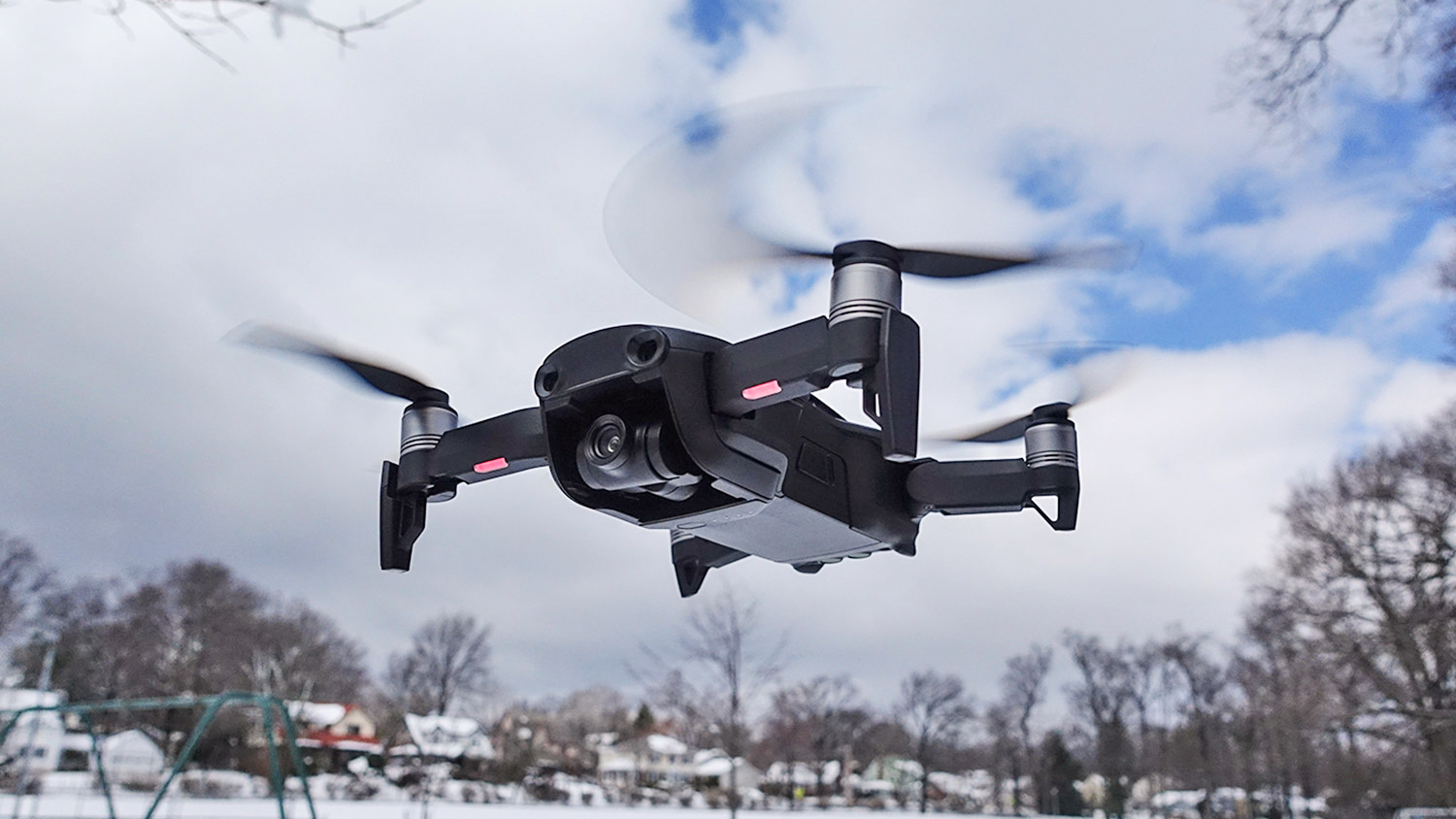DJI will stop restricting its drones from flying over sensitive areas like the White House and wildfires
Decision stirs up controversy

DJI Mavic Air. Credit: Mike Prospero/Tom's Guide
(Image credit: Future)Since at least 2013 when DJI first released its Phantom drone in the United States, the company has made it difficult for drone operators to fly DJI drones over restricted areas. The software on the drones would automatically restrict you from flying over sensitive places including runways, the White House, and power plants.
Controversially, as anti-China sentiment has heated up in the US government, the Shenzhen-based company announced that it was removing its geofence. Instead, the drone software will no longer enforce "No-Fly zones." Now, the DJI Fly and Pilot apps will simply put up a dismissable warning when your drone enters an "Enhanced Warning Zone." Now, drone operators will be responsible for not flying in places they shouldn't.
In a blog post announcing the decision, DJI said that the decision places "control back in the hands of the drone operators, in line with regulatory principles of the operator bearing final responsibility."
DJI claims that tools like Remote ID make it easier for law enforcement to enforce flight rules since Remote ID broadcasts drone and operator locations.
It's a controversial decision, especially since it was a DJI drone that damaged a Canadian Super Scooper airplane involved in fighting the ongoing Los Angeles wildfires. That incident grounded the plane as the drone ended up punching a "fist-sized" hole in the wing. Reportedly, that drone was a sub-250 gram model that might not have Remote ID. Meanwhile, other operators have been arrested in Los Angeles for flying drones over wildfire areas in the Palisades and Altadena.
The geofencing feature was created by DJI when it first entered the consumer drone market. However, in June of 2024, the US house passed a DJI drone sales ban. The initial concerns from the US government is that the Chinese government owns around 6% of the company's stock and a sudden desire to protect American drone businesses.
Unlike TikTok, which is facing a ban right now, DJI was given a grace period by the US Senate when it passed the National Defense Authorization Act in December. A portion of that bill gives DJI, and drone maker Autel Robotics, one year before its products are automatically banned. DJI praised the inclusion but did note that it was worried that no specific agency was cited for studying DJI's products for risk.
Sign up to get the BEST of Tom's Guide direct to your inbox.
Get instant access to breaking news, the hottest reviews, great deals and helpful tips.
DJI controls around 70% of the global drone market and makes up 90% of our picks for the best drones. It's not a monopoly, but the company makes easy-to-understand drones that are great for beginners on up to commercial flyers.
In an interview with the Verge, DJI defended the decision to remove the geofencing feature.
"This GEO update aligns with the principle advanced by aviation regulators around the globe — including the FAA — that the operator is responsible for complying with rules," a spokesperson said.
They reiterated that geofence was voluntary and the FAA's Remote ID requirements are more helpful for authorities. The company also noted that it follows similar changes that were implemented the European Union in 2024. A spokesperson told The Verge that there was "no evidence of increased risk" in the EU.
A DJI blog post from today, January 16, claimed that the decision was not political and that it was planning on introducing the change months ago. According to the post, it appears that the timing and vibes are bad mostly due to the current political and climate situation.
More from Tom's Guide

Scott Younker is the West Coast Reporter at Tom’s Guide. He covers all the lastest tech news. He’s been involved in tech since 2011 at various outlets and is on an ongoing hunt to build the easiest to use home media system. When not writing about the latest devices, you are more than welcome to discuss board games or disc golf with him.
